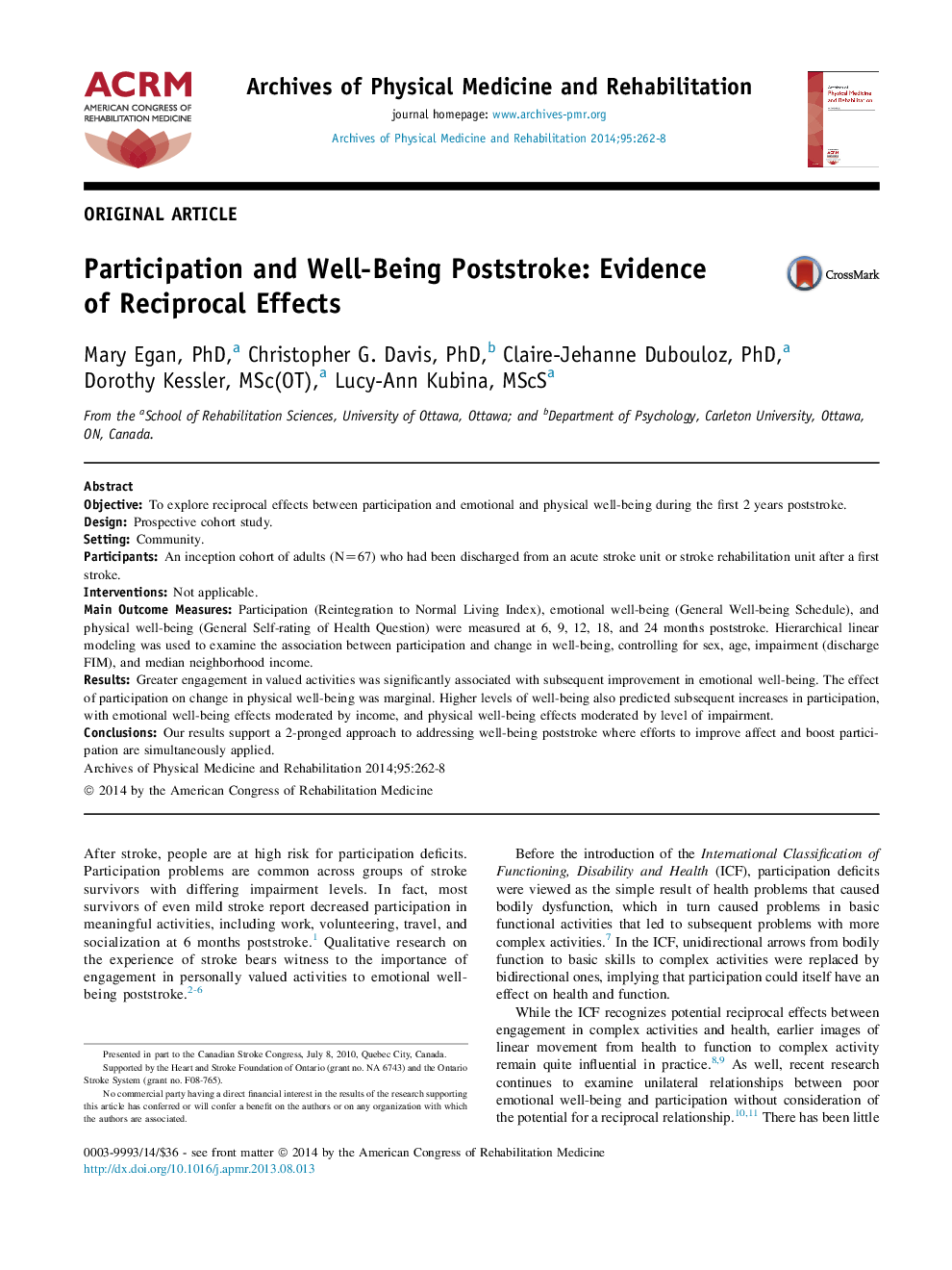| Article ID | Journal | Published Year | Pages | File Type |
|---|---|---|---|---|
| 3449036 | Archives of Physical Medicine and Rehabilitation | 2014 | 7 Pages |
ObjectiveTo explore reciprocal effects between participation and emotional and physical well-being during the first 2 years poststroke.DesignProspective cohort study.SettingCommunity.ParticipantsAn inception cohort of adults (N=67) who had been discharged from an acute stroke unit or stroke rehabilitation unit after a first stroke.InterventionsNot applicable.Main Outcome MeasuresParticipation (Reintegration to Normal Living Index), emotional well-being (General Well-being Schedule), and physical well-being (General Self-rating of Health Question) were measured at 6, 9, 12, 18, and 24 months poststroke. Hierarchical linear modeling was used to examine the association between participation and change in well-being, controlling for sex, age, impairment (discharge FIM), and median neighborhood income.ResultsGreater engagement in valued activities was significantly associated with subsequent improvement in emotional well-being. The effect of participation on change in physical well-being was marginal. Higher levels of well-being also predicted subsequent increases in participation, with emotional well-being effects moderated by income, and physical well-being effects moderated by level of impairment.ConclusionsOur results support a 2-pronged approach to addressing well-being poststroke where efforts to improve affect and boost participation are simultaneously applied.
